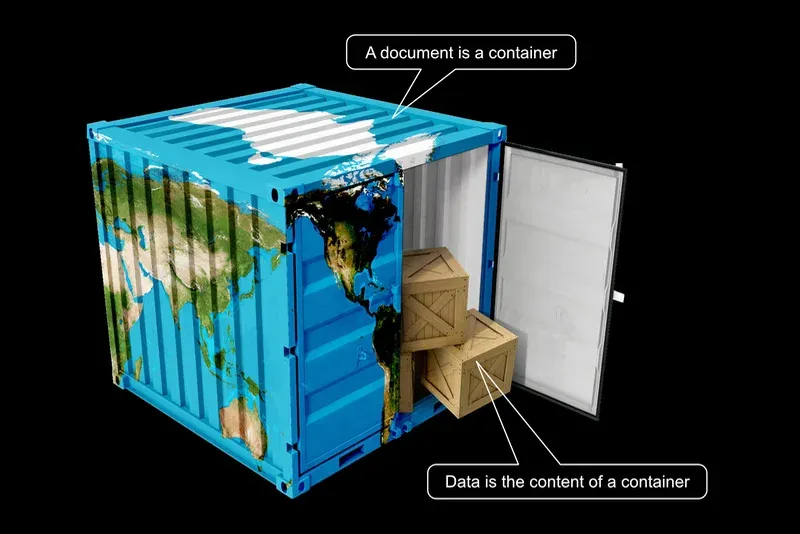Document vs Data vs Code – Learn the Difference
Document, data, and code are three essential words in computing.
“Document” is often used interchangeably with “data”—however, the two words have subtle differences.
Moreover, “code” is commonly used purely as a technical term—but it has significant similarities with data.
This article will explain the differences and similarities between a document, data, and code.
First up, document.
What Is a Document?
Section titled “What Is a Document?”A document is a page used to contain text, or graphics, or both.
For instance, consider the image below:

White paper containing a “phone a friend” text and a telephone handset graphic
The paper (with the text “phone a friend”) is a document because it contains some text and a drawing.
Types of documents
Section titled “Types of documents”Digital pages and paper pages are the two main document types for holding data.

But you may ask: “Is data not equivalent to a document?” No. Not at all! Let’s take a closer look at “data.”
What Is Data?
Section titled “What Is Data?”Data is the content of a document.
In order words, the text and graphics on a page are the document’s data.
So, while a document is a container, data is the content of that container.

Wooden boxes in an intermodal (shipping) container depict a document’s data.
Types of data
Section titled “Types of data”The most common types of data are graphical, audio, and textual data.
Graphical data
Section titled “Graphical data”Graphical data are the visual contents of a page, such as diagrams, charts, videos, and images.
Audio data
Section titled “Audio data”Audio data are the sound-recorded contents of a page, such as WAV, MP3, and AAC.
Textual data
Section titled “Textual data”Textual data are the written contents of a page such as letters (e.g., A, B, C), numbers (e.g., 1, 2, 3), symbols (e.g., $, #, +), and codes (e.g., <input>, body { background: #A18A77; }, if (condition) { //execute code }).
But hang on a sec, if a document is a page, and data is the content of a page, what then is a code? Let’s find out below.
What Exactly Is Code?
Section titled “What Exactly Is Code?”Code is any language that computers can understand and process. In other words, code means “computer’s language.”
Types of codes
Section titled “Types of codes”There are several code types, but the common ones are HTML, CSS, JavaScript, and Python.